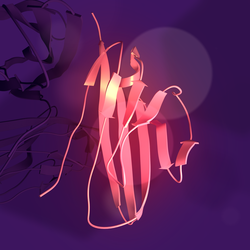Top Qs
Timeline
Chat
Perspective
SCN3B
Protein-coding gene in the species Homo sapiens From Wikipedia, the free encyclopedia
Remove ads
Sodium channel subunit beta-3 is a protein that in humans is encoded by the SCN3B gene.[5][6] Two alternatively spliced variants, encoding the same protein, have been identified.
Remove ads
Function
Voltage-gated sodium channels are transmembrane glycoprotein complexes composed of a large alpha subunit and one or more regulatory beta subunits. They are responsible for the generation and propagation of action potentials in neurons and muscle. This gene encodes one member of the sodium channel beta subunit gene family, and influences the inactivation kinetics of the sodium channel.[6]
Clinical significance
Mutations in the gene are associated with abnormal cardiac electrophysiology.[7][8]
See also
References
Further reading
External links
Wikiwand - on
Seamless Wikipedia browsing. On steroids.
Remove ads







